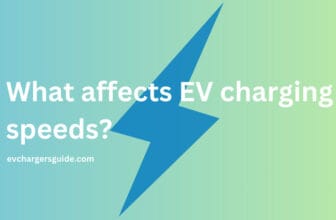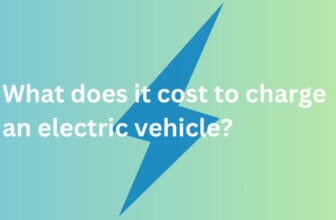![Is Supercharging Bad For Tesla Battery - Is Supercharging Bad For Tesla Battery? [Myth Busted!] Is Supercharging Bad For Tesla Battery](https://evchargersguide.com/wp-content/uploads/2023/12/Is-Supercharging-Bad-For-Tesla-Battery.jpg)
The answer to the question does supercharger damage battery in EV is now having diverse opinions.
Earlier Battery science authorities, clearly defined that a high charge-discharge rate will degrade the battery faster.
However, even the same thing is being told by Tesla.
However, a recent study published by Recurrent says otherwise. (Link at the end of article)
Still, there is no hard evidence on this to come to a fixed answer as to whether supercharging is bad for Tesla and EV batteries.
In reality, No-one knows how fast the battery degradation happens with superchargers.
The subject remains in a conflict.
But for you to get a transparent insight on this topic, let’s head to some clarifications.
In This Article:
Are Superchargers Bad For Tesla?
Despite what research says, it is still best for now to say, that there is no issue in using superchargers occasionally.
But even if frequently or every time using a supercharger to charge your Tesla is worse than occasional use.
However, it won’t give that big hit to the battery even when used regularly for a quite significant time.
As per the fundamentals of Battery science experts, a high C-rate of more than 1C as done by supercharging will degrade the battery faster than a lower C-rate of level 2 or level 1 charging.
(Note: 1C rate means to charge EV from 0-100% in 1 hour, 0.5C rate means it will take 2 hours for a full charge)
So supercharging is bad for Tesla, but not that bad. The effects won’t appear that early.
Even Tesla said that the battery will last longer than the vehicle itself. (More details in later sections)
But, in some cases, the battery degradation will happen faster with certain charging practices.
So it is best to avoid such charging practices.
I am giving you the details below about such charging practices to avoid.
However such practices are not just limited to supercharging, in every charging condition such practices will degrade the battery faster than normal.
But degradation with supercharging will be more than others. So make sure you take care of the things explained below while supercharging your Tesla.
Best Practice Before Supercharging Tesla – As Per Research
The only thing that can delay or slow down the battery degradation with supercharging,
- Avoid hot temperature supercharging (Especially of the battery)
- Avoid cold temperature supercharging (Especially of the battery)
- Avoid high and low SoC to charge with supercharging (Avoid supercharging when below 20% and above 80%)
- Do preconditioning of the battery before supercharging
- Overall avoid the battery charge level from dropping below 20% and crossing 80%
All of the above will mitigate the strain and resistance in the battery cells and it slows the degradation.
With this, there won’t be much gap in battery degradation rate between supercharging and normal charging.
But note, that battery degradation is an inevitable process, no one can stop it. What we can do is just make it slow so that the battery lasts for a long enough time.
I have made a dedicated article on Tesla charging limits and the reality of Tesla battery degradation you can look at it here to get deeper insights. It applies to all EV car batteries.
Is Tesla Supercharger Bad for Battery?
Now there are claims that the Tesla supercharger has a built-in battery charging protection algorithm, which protects the battery.
However, there are no official statements on this.
Tesla cars are equipped with a Battery Management System (BMS) which works and protects the battery while charging with DC charging or supercharging.
A Battery Management System remains active all the time while driving, charging, in sleep mode or sentry mode, etc where the car system remains awake.
The BMS ensures and maintains the charge rate, discharge rate, temperature of the battery, etc in order to sustain the battery for longer.
When it comes to supercharging even though DC charging bypasses the on-board charger, the BMS will anyway have the role to play in.
This will take care of all operating and charging parameter limits to protect the battery. That works while charging.
However, the BMS will ensure that necessary parameters remain within the desired limit, but with still certain other factors, some manual intervention is needed.
Like, charging in a too-hot or cold climate, charging after a too-long drive (When the battery gets overheated), etc will cause Tesla and battery temperature to go beyond a certain limit (either hot side or cold side).
So in those cases, you need to balance out with Tesla climate controls before starting a charging session to avoid battery degradation.
However when it comes to charge rate with supercharging, the degradation of battery of course happens more than level 1 or 2 charging, but again it won’t be that significant to worry about at least within your Tesla’s first-ownership period. (And what Tesla officials say about Tesla battery life, more in later section)
Is Non-Tesla Supercharger Bad For Tesla Battery?
This is also a question of importance.
Whether non-Tesla superchargers are going to degrade Tesla batteries faster than Tesla-branded superchargers.
Well, some says that charging at Tesla superchargers will activate a battery protection system in Tesla, but this is not the case with non-Tesla supercharger.
Charging Tesla at non-Tesla superchargers won’t trigger that protection system, which then will damage the battery cells faster than Tesla superchargers.
This is again a claim that has no official substantiation.
But to be honest, you just stick with the best practices to do before supercharging your Tesla as explained earlier.
That will take care of the issue of battery degradation.
How Fast Does Tesla Battery Degrade?
As per Tesla officials’ statement, the Tesla battery will last longer than the vehicle’s lifespan.
They say in their impact report 2022 that even after 200,000 miles the Tesla batteries degrade only for 12%.
So it is not needed for Tesla users to go deep into whether does Tesla supercharger damage battery.
Just drive your luxury and enjoy!
Tip: If you want to know how much battery degradation happened in your Tesla overtime then you can follow this guide.
Key takeaways
It is recommended to use superchargers only occasionally – but it’s ok if you can’t follow that.
Superchargers won’t damage Tesla battery much if you stick to best practices for supercharging Tesla.
Still, level 2 chargers are better for daily use as of now, but also not much issues even with level 3 or superchargers for regular usage. (Till we get some deeper scientific evidence on battery degradation)
So now are you all clear about the reality of the cons of supercharging Tesla?
Then see you in the next article!
Notes:
- Recurrent research link
FAQs
Does supercharging your Tesla ruin the battery?
Supercharging Tesla won’t ruin the battery but fast charging definitely has a negative impact on battery health compared to normal speed charging.
However, data published by Recurrent says otherwise but still it’s not enough to come to a conclusion like that.
There are a lot of contrary views on this from battery science experts. Also as per me, I see faster charging the battery definitely degrades at a faster pace than normal charging. Although it won’t be even that noticeable in normal usage of superchargers, that is possible. OR even using too much superchargers for certain number of years you won;t notice anything bad in your Tesla battery.
But there are many incidents where Tesla’s range getting depleted using too much supercharging and Tesla software then reduces the supercharging speed for the vehicle to protect the battery.
Not forgetting new battery technologies are always undergoing research to come with High-Quality battery materials that sustain faster charging better and those kind of batteries are surely going to come but again I can’t deny that supercharging has an upper hand in degrading EV batteries.
Is it bad to supercharge a Tesla every day?
It won’t be that bad enough to use superchargers every day for a certain number of years. Especially if you are concerned about whether you will see negative effects soon. It’s not BAD in the sense you ask this question is it BAD? At least probably in your Electric Vehicle’s user lifetime you probably won’t see that effect. But comparatively with normal charging in the battery’s lifetime, there’s sure a bad effect. But maybe the first owner won’t see that. At least that advanced current battery technology is there in usage.

![What is the cost to install Tesla charger at Home? [Detailed Guide]](https://evchargersguide.com/wp-content/uploads/2023/12/how-much-does-it-cost-to-install-tesla-home-charger.jpg)
















I am using supercharger for last 5 years with my Tesla MS every week, its working all fine and I checked battery health 2 months ago, it was at 97%.
That’s good performance. Not bad. It will remain healthy till 15-20 years.
I didn’t have any battery issues.. using supercharger for more than 7 years at stretch. It worked all good for me.
That’s cool Charles, great to listen. Ya, it won’t cause that bad effect on battery actually. But you should consider a watch over battery health every year or a two.
I also don’t find any issue with supercharging yet.
Same with me. I don’t find any issue with supercharging yet.
I given my Tesla MS to rentals since last 9 years and now I just taken it back couple of months ago. Just a week ago I got error on screen saying maximum charge level reduced, I don’t know what’s the issue and why. I noticed slowed charging speed with supercharger since a month. It mostly charged at superchargers daily as running on long distance. I think this is due to too much supercharging… I guess.
Yea! rental cars have aggressive battery usage almost throughout every day. Over time it would result in more battery degradation than normal use. Slowed supercharger charging speed in Tesla is one of the sign.
I don’t think so. at least no damage yet. Using only superchargers. But will consider this moving on.
Yup! exactly I follow the best practices. Till date I used mostly superchargers since last 7+ years and yet I don’t see any dip in my car’s battery.
That’s good thing. Thanks for sharing with us.
For me it reduced charging speed now. I was using supercharger since last 7 years. It’s now taking little more to charge at supercharger than earlier.